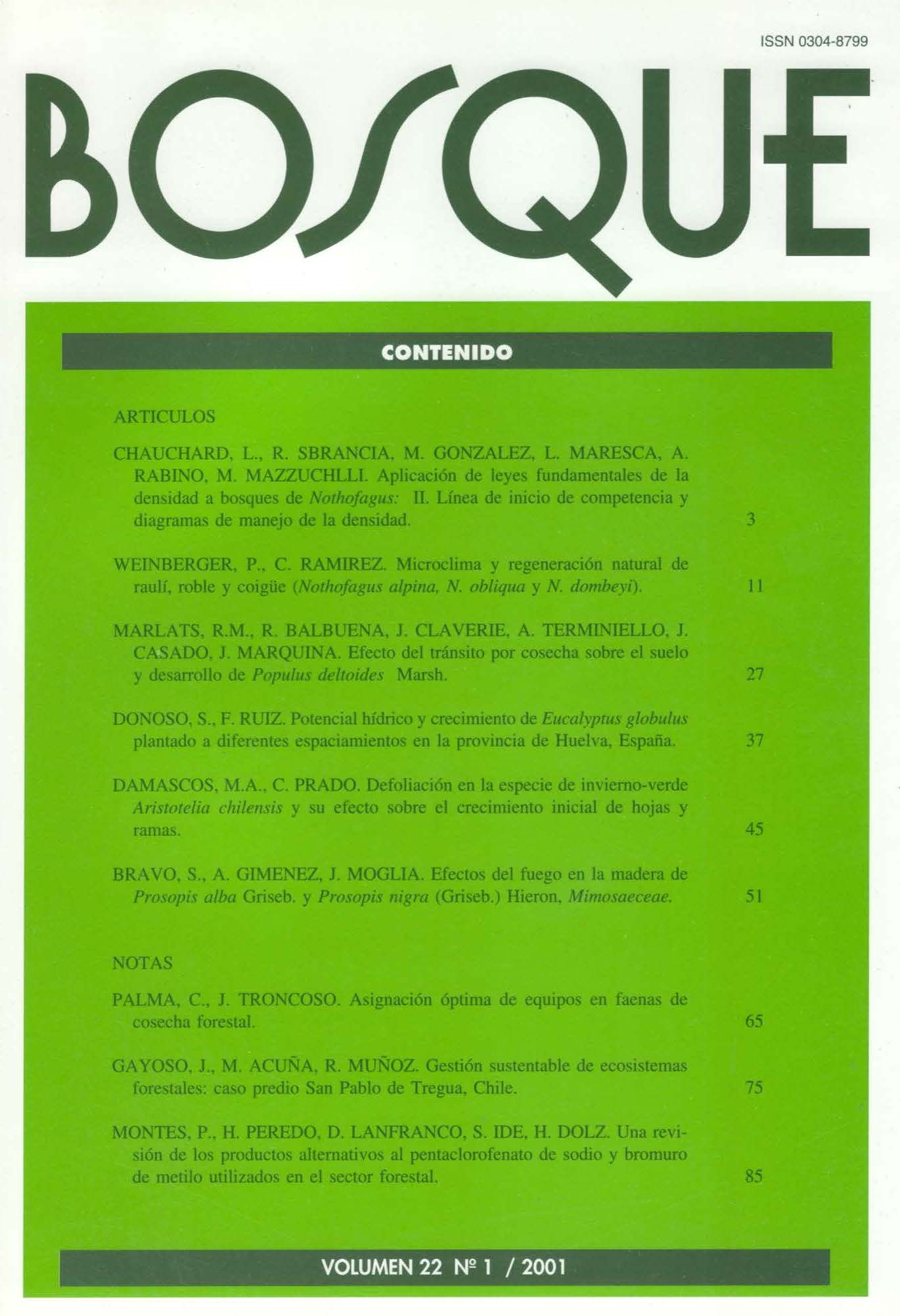Main Article Content
Jun 29, 2001
Abstract
Defoliation effects on vegetative growth in early spring were evaluated in the evergreen species Aristotelia chilensis growing in two areas of Nothofagus dombeyi forest in Argentina. In both studied sites (S1 and S2) the mean values of the linear initial branch growth were lower and statistically different in defoliated plants (S1: 2,48±0.98 cm, S2: 2,08±0,77 cm) than in control plants (S1: 6,13±4,88 cm, S2: 6,38±0,69 cm). However, new leaves flushed in early spring showed similar mean values of the specific leaf mass (PEF, g m-2) in defoliated (S1: 40,00±4,82 g m2 , S2: 52,10±18,10 g m-2) and in control plants (S1: 42,10±20,48 g m-2 , S2: 48,5±16,4 g m-2). The results are related to short and long term whole plant carbon balance. Defoliated plants would be affected in their short term carbon balance and they would not have resources to maintain the branch linear growth (a carbon sink). Defoliated plants sustained the construction of the new leaves (a carbon source when expanded) in order to assure the long term carbon balance as positive as possible.


